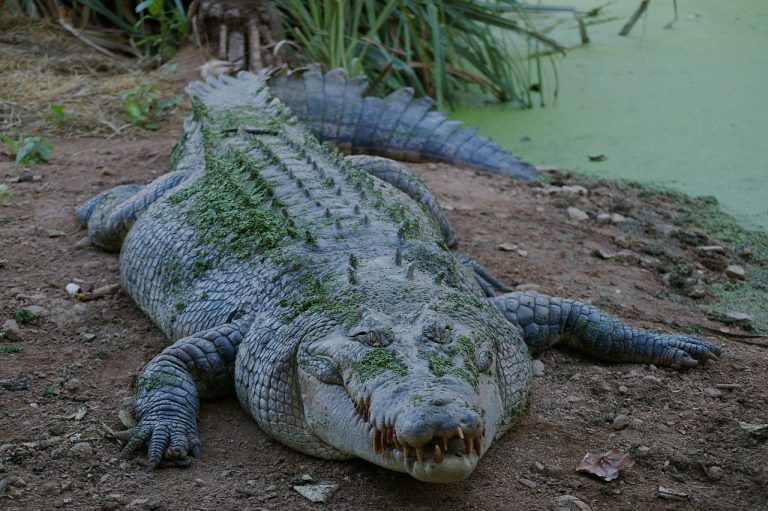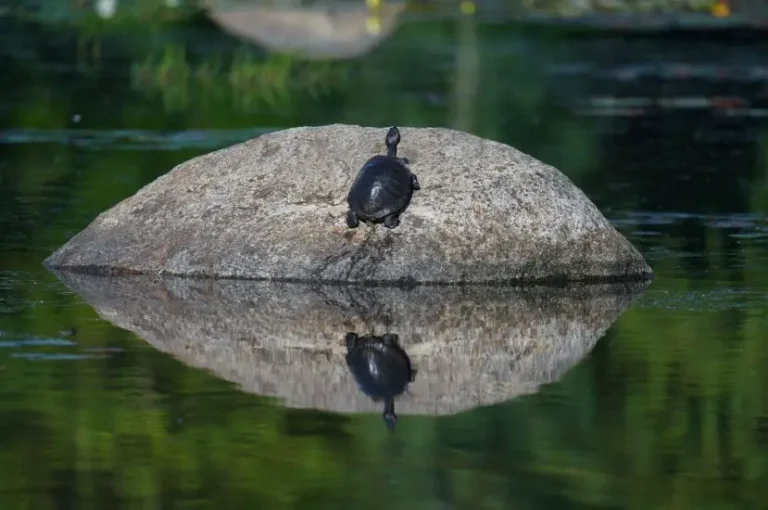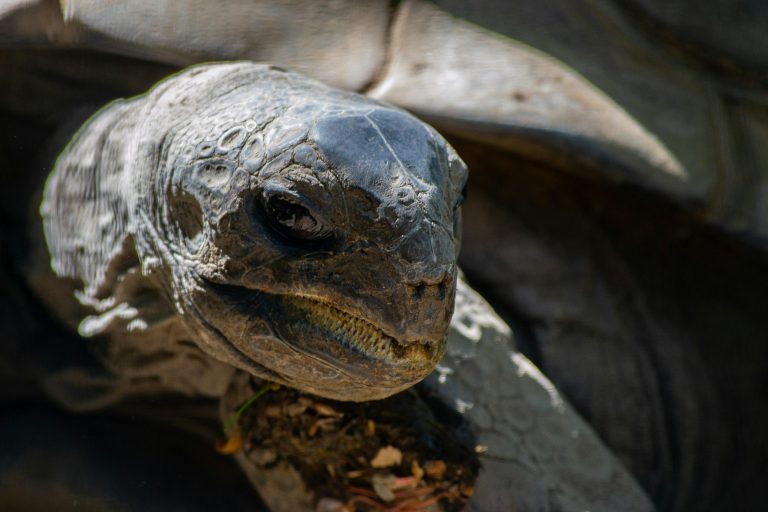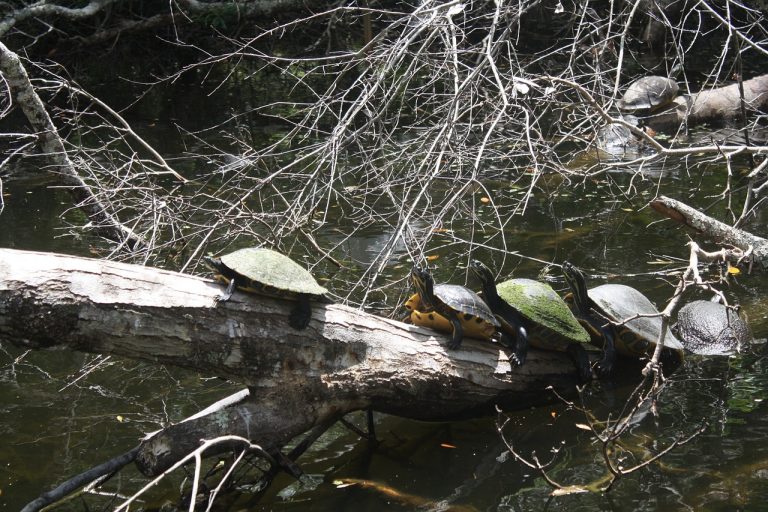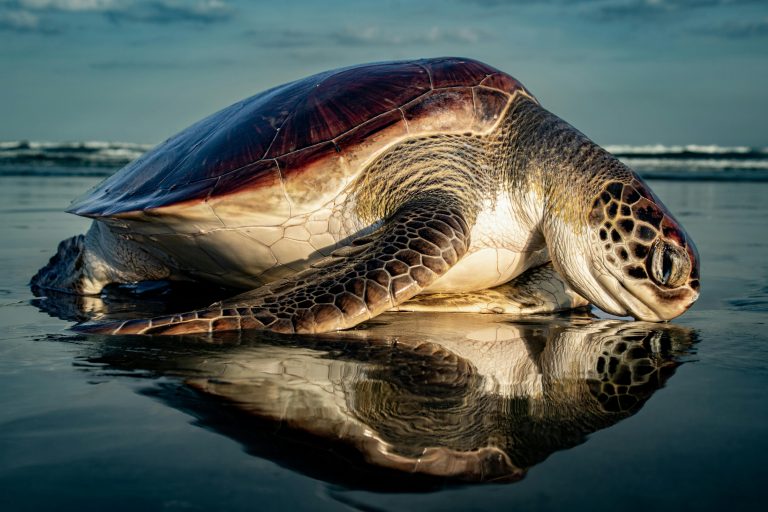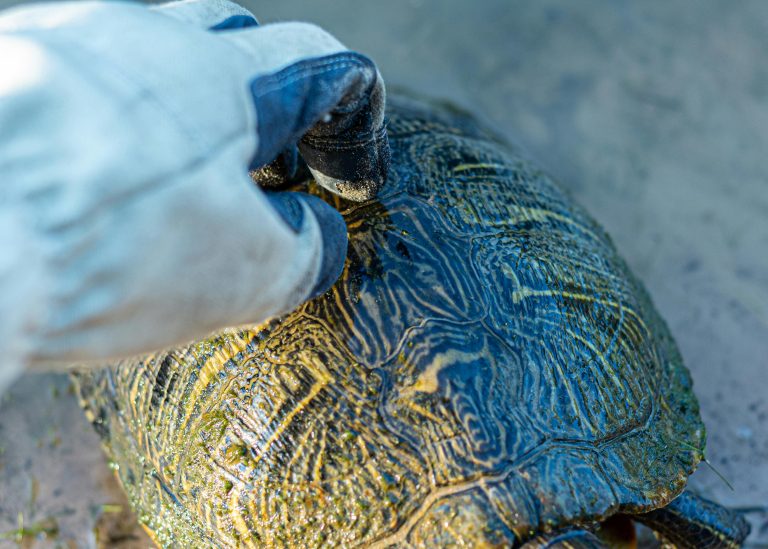Black Mamba (D. polylepis)
“Black mambas are the longest venomous snake in Africa, and second longest in the world.”
Black Mamba Scientific Classification
- Kingdom: Animalia
- Phylum: Chordata
- Class: Reptilia
- Order: Squamata
- Family: Elapidae
- Genus: Dendroaspis
- Scientific Name: Dendroaspis polylepis
Black Mamba Conservation Status
Conservation Status: Least Concern
Black Mamba Locations
Primary Habitat: Africa
Additional Information
The Black Mamba (Dendroaspis polylepis) is one of the most feared snakes in Africa due to its potent venom and aggressive nature. Despite its fearsome reputation, it is currently listed as “Least Concern” by conservation organizations, meaning that it is not at immediate risk of population decline. This species is primarily found in various regions across Africa, including savannas, rocky hills, and open woodlands.
Black Mamba Facts
Prey:
- Bush babies
- Hyraxes
- Birds and their young
- Mammals
- Occasionally other snakes
Main Prey:
- Birds and their young
Name Of Young:
- Hatchlings
Group Behavior:
- Solitary
Fun Fact:
- Black mambas are the longest venomous snake in Africa and the second longest in the world.
Most Distinctive Feature:
- The inside of a black mamba’s mouth is black.
Temperament:
- Skittish and prone to strike out of fear.
Predators:
- Secretary birds
- Brown snake eagles
- Tawny eagles
- Other birds of prey
- Honey badgers
- Mongooses
- Nile crocodiles
Diet:
- Carnivore
Lifestyle:
- Diurnal
Black Mamba Physical Characteristics
Color:
- Brown
- Grey
- Olive
Skin Type:
- Scales
Top Speed:
- 20 mph
Lifespan:
- Captive specimens have lived 11 years, but lifespan in the wild is unknown.
Length:
- Typically 6-9.5 feet long, with a few reports of specimens reaching 14 feet.
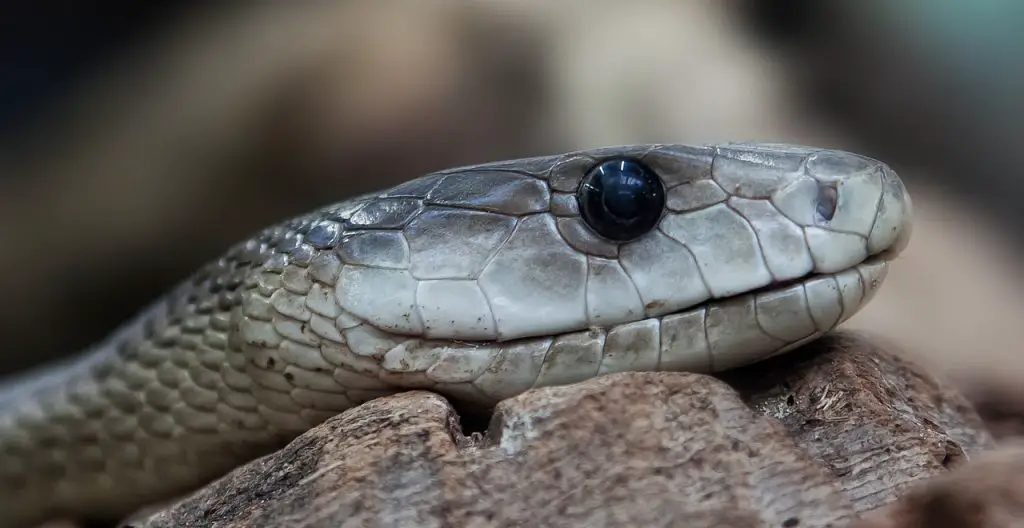
5 Amazing Black Mamba Facts
- Black mambas can grow to an impressive 6 feet in length within their first year of life.
- Like their cobra cousins, black mambas have a very thin hood which they flare when they feel threatened, creating a more intimidating appearance.
- These snakes have been clocked at speeds of up to 7 miles per hour, and some believe they may be able to move even faster for short bursts.
- A single black mamba can inject up to 280 mg of venom in one bite, yet it only takes 15-20 mg to be potentially lethal to a human.
- In one documented case, a bite victim required 20 vials of antivenom but eventually made a full recovery, highlighting the importance of prompt medical treatment.
Where To Find Them
Black mambas are highly adaptable snakes found across a wide range in sub-Saharan Africa. They thrive in various habitats, including light woodlands, scrublands, rocky outcrops, and semi-arid savannas. They can also be found in lowland forests and moist savannas. These snakes are known for their loyalty to their dens, returning to the same spot unless it’s disturbed.
Black mambas are widespread throughout sub-Saharan Africa, with a notable presence in southern and eastern regions. You can encounter them in countries like Burkina Faso, Cameroon, the Central African Republic, the Democratic Republic of the Congo, South Sudan, Ethiopia, Eritrea, Somalia, Kenya, Uganda, Tanzania, Burundi, Rwanda, Mozambique, Eswatini, Malawi, Zambia, Zimbabwe, Botswana, South Africa, Namibia, and Angola.
When it comes to hunting, black mambas are opportunistic feeders. They primarily prey on bush babies, hyraxes, birds and their young, and various mammals, but they won’t hesitate to eat other snakes if the opportunity arises. Instead of holding onto their prey, they strike, inject their venom, and then release it. They wait nearby until the animal succumbs to the venom before consuming it.
Scientific Name
Dendroaspis polylepis, commonly known as black mambas, belong to the Elapidae family, which includes other notable snakes like King Cobras and coral snakes. Their scientific name comes from ancient Greek: “Dendroaspis” means “tree asp” (dendro = tree + aspis = asp), with “asp” being a term once used to describe any venomous snake. “Polylepis” combines “poly” for many and “lepis” for scale, so Dendroaspis polylepis translates to “Many-scaled tree asp.”
The common name “mamba” is borrowed from either Swahili or Zulu, and these snakes are also known as black-mouthed mambas.
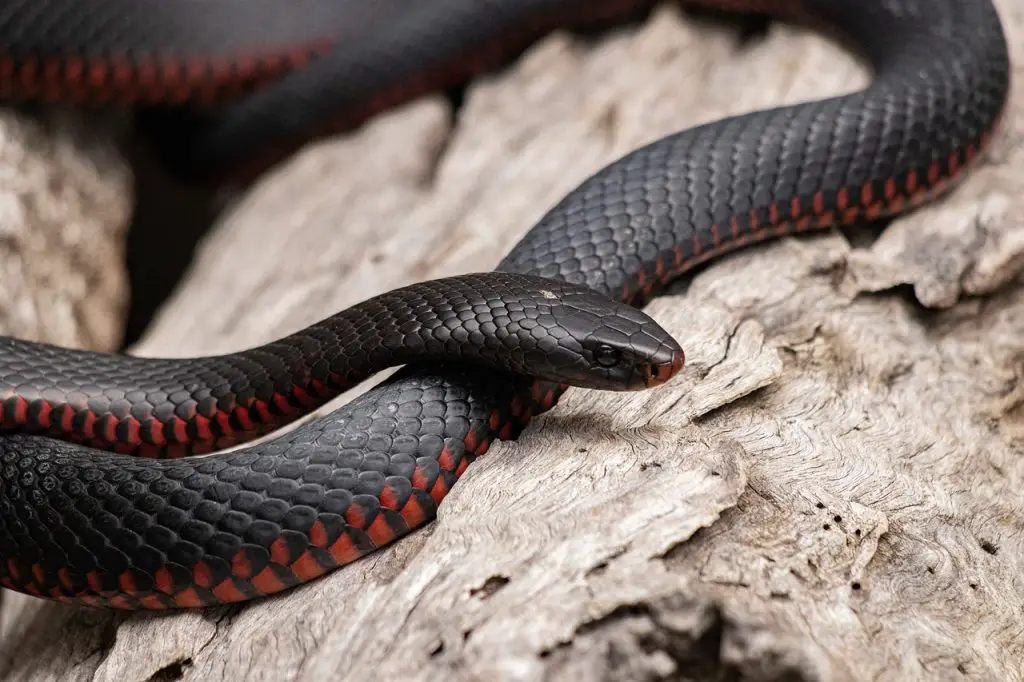
Types of Mambas
The different species of mambas inhabit various regions and habitats across Africa:
- Eastern Green Mamba (Dendroaspis angusticeps): Found in the coastal rainforests of East Africa.
- Western Green Mamba (Dendroaspis viridis): Inhabits the coastal rainforests of West Africa.
- Black Mamba (Dendroaspis polylepis): Both terrestrial and arboreal, it lives in savannas, woodlands, rocky slopes, and forests of sub-Saharan Africa.
- Jameson’s Mamba (Dendroaspis jamesoni): Similar in appearance to the Western Green Mamba, this species inhabits areas of western and central Africa.
History and Evolution
The Black Mamba has evolved several adaptations that help it thrive in its African environments:
- Like other snakes, the Black Mamba has a highly developed sense of smell and taste. These senses allow it to locate prey with precision and detect potential threats. This heightened sensory ability helps the snake hide or flee from predators effectively.
- Hood Structure:
- The Black Mamba has a hood structure that it can flare out when threatened, similar to other elapids. This makes the snake appear larger and more intimidating to potential predators. The hood is formed by elongated ribs and specialized skin on the neck area.
- As a proteroglyph, the Black Mamba has fixed fangs that do not retract back into the mouth. These fangs are shorter than those of some other vipers, preventing them from piercing the bottom of its mouth when it closes. This adaptation allows the Black Mamba to deliver venom efficiently without self-injury.
These adaptations make the Black Mamba a highly effective predator and help it navigate and survive the various challenges in its environment.
Population & Conservation Status
The Black Mamba population is currently not in danger, and due to its extensive range throughout sub-Saharan Africa, it is classified as “Least Concern” on the IUCN Red List. However, they face threats primarily from humans who fear them due to their aggressive reputation.
Although often killed out of fear by people living near them, Black Mambas have several natural predators, including:
- Mongooses
- Honey badgers
- Birds such as brown snake eagles, secretary birds, and black-headed herons
- Crocodiles, which have been known to consume them occasionally
Despite these threats, their population remains stable, thanks to their adaptability and wide distribution across the continent.
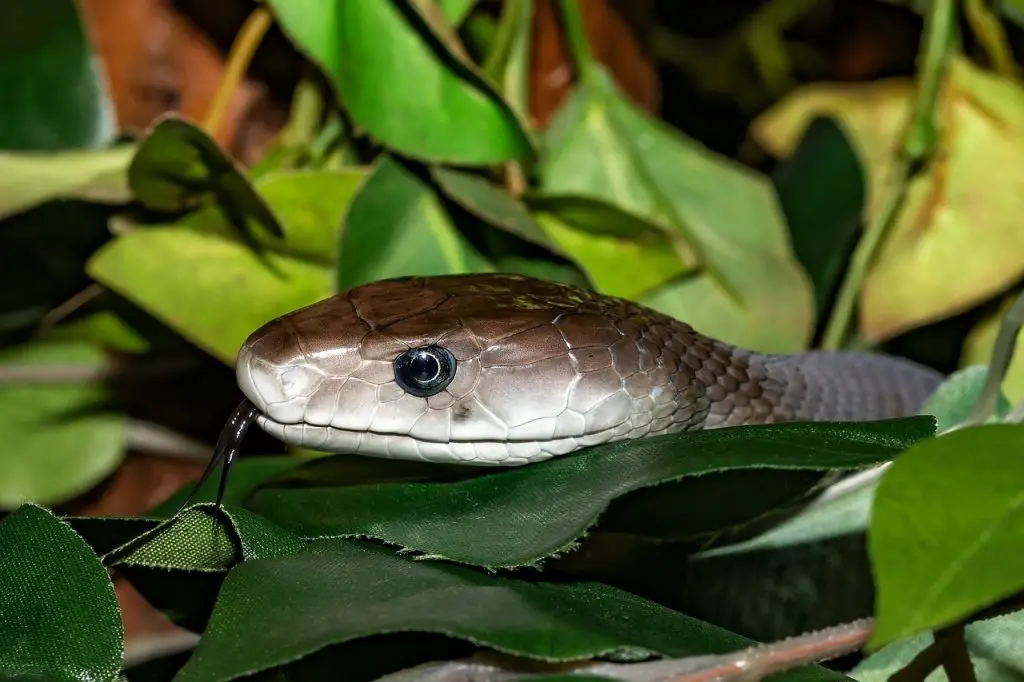
How To Identify Them: Appearance and Description
Black Mambas (Dendroaspis polylepis) are indeed fascinating and fearsome creatures. Known for their potent neurotoxic venom and lightning-fast strikes, they command respect in the snake world. Their sleek appearance and agile movements make them iconic, and their reputation as one of Africa’s deadliest snakes is well-deserved.
These snakes are highly adapted predators, with their long bodies allowing for efficient maneuverability and their potent venom ensuring successful prey capture. Despite their intimidating reputation, Black Mambas typically avoid confrontation with humans and will only strike if they feel threatened or cornered.
Their striking appearance, coupled with their deadly venom and impressive size, make encounters with Black Mambas both thrilling and potentially dangerous. However, respecting their space and observing them from a safe distance is key to appreciating these magnificent creatures in their natural habitat.
Venom: How Dangerous Are They?
It’s true that Black Mambas are often misunderstood due to their fearsome reputation. While they are indeed highly venomous and can deliver a potent bite, they typically prefer to avoid confrontation with humans and will only strike when they feel threatened or cornered.
The statistics you provided regarding the relatively low number of reported snakebites from Black Mambas in South Africa over a five-year period support the notion that encounters with these snakes are rare. This further emphasizes that while they are dangerous animals, they are not inherently aggressive towards humans.
Understanding the symptoms of a Black Mamba bite is crucial for anyone living or traveling in areas where these snakes are found. Rapid progression of symptoms, including local effects such as pain, swelling, and tissue damage, as well as systemic effects like nausea, seizures, and coma, underscores the importance of seeking prompt medical attention in the event of a bite.
Overall, while Black Mambas command respect due to their venomous nature, it’s important to recognize that they play a vital role in their ecosystems and are not the aggressive monsters they are sometimes portrayed to be. Respecting their space and exercising caution in areas where they are known to inhabit is the best way to avoid encounters and mitigate the risk of snakebite.
Behavior & Humans
The reputation of the Black Mamba as an aggressive and fearsome snake is indeed widespread, leading to many misunderstandings about its behavior. However, as you rightly mentioned, much of this behavior stems from its nervous and skittish nature rather than inherent aggressiveness.
Black Mambas are primarily shy and elusive creatures, preferring to avoid confrontation with humans whenever possible. When they feel threatened or cornered, they may exhibit defensive behaviors such as hissing, raising a portion of their bodies off the ground, and spreading a thin hood similar to cobras. These behaviors are more about signaling a warning rather than actively seeking out aggression.
Their incredible speed, capable of reaching up to 7 miles per hour or more in short bursts, is mainly used as a means of escape rather than for aggressive pursuits. This agility allows them to swiftly evade potential threats, further emphasizing their preference for flight over fight.
While Black Mambas possess potent venom and are undoubtedly dangerous, they are not the ruthless aggressors they are often portrayed to be. Understanding and respecting their behavior and habitat is essential for minimizing human-snake conflicts and promoting coexistence with these remarkable creatures.
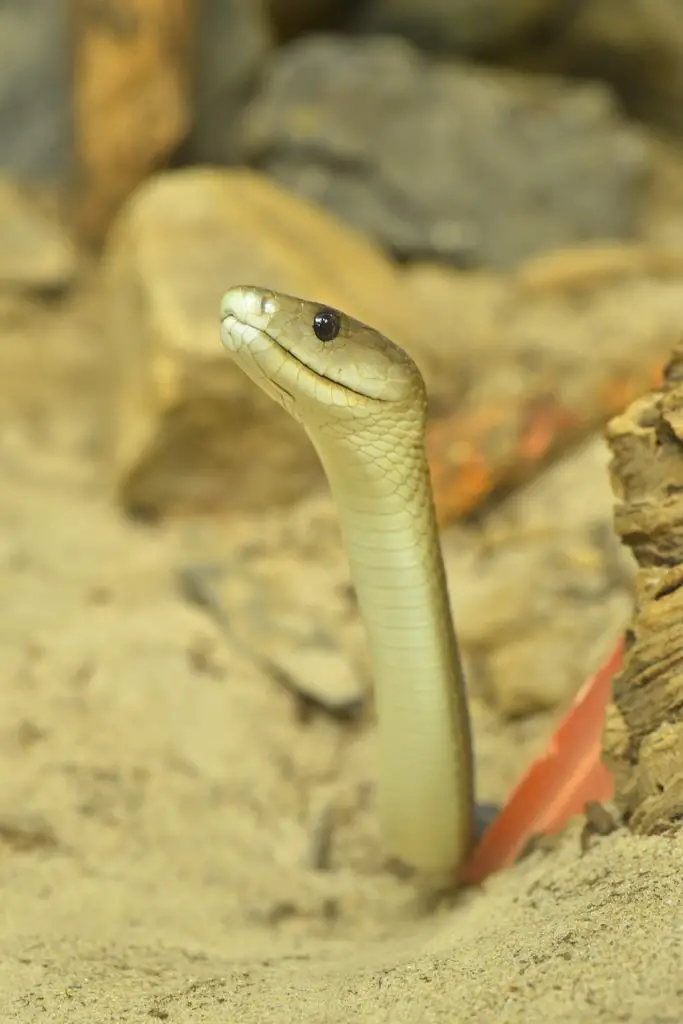
Lastly…
The Black Mamba is a fascinating and highly misunderstood snake. While its reputation for aggressiveness is widespread, it is more accurately characterized by its nervous and skittish nature. Preferring to avoid confrontation with humans, it typically only becomes aggressive when threatened or cornered. With its potent venom and incredible speed, the Black Mamba commands respect but is not the ruthless predator it’s often portrayed to be. Understanding and respecting its behavior is crucial for promoting coexistence and minimizing human-snake conflicts in its habitat.
Reference: https://en.wikipedia.org/wiki/Black_mamba
